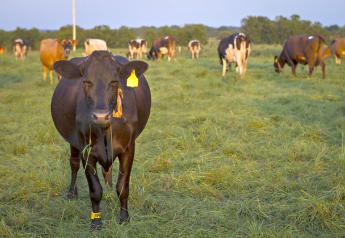Top-down or Bottom Up Animal ID?

Source: National Institute for Animal Agriculture press release
Diverse opinions and facts were voiced, shared and questioned at ID•INFO EXPO 2009 last week in Kansas City, Mo. More than two dozen speakers representing federal and state government, agribusinesses, media, industry—large producers as well as small producers—and the food industry conveyed their messages related to the current state of animal identification in the United States.
Sponsored by the National Institute for Animal Agriculture, the EXPO allowed EXPO participants to get their to-the-point questions answered in front of the assembly while breaks provided opportunity for one-on-one conversations between speakers and attendees.
"No one was here to endorse or negate NAIS (the National Animal Identification System),” says "We gathered to listen, learn, clarify concerns and opportunities, identify next steps and collaborate on furthering animal identification in the U.S.”
"In the end, consensus was that a top-down approach to national animal identification isn't the answer and neither is a bottom-up approach,” says Glenn Fischer, chairman of the ID•INFO EXPO Planning Committee. "A vast majority agreed that the best approach is somewhere in the middle with producer understanding of the program and dedicated leadership needed to make a program work.”
Dr. William Hartmann, executive director and state veterinarian, Minnesota Board of Animal Health, summarized his state animal health experiences and views quite succinctly: "A national animal identification plan is not a question of mandatory or voluntary. It's a necessity.
Whether animal agriculture likes it or not, "necessity” it could become as Dr. David Acheson, formerly of the U.S. Food and Drug Administration who now serves as managing director of food and import safety practice at Leavitt Partners in Utah, pointed out that the Obama Administration "wants to make capital out of protecting the food supply.” Acheson noted that food safety efforts by the FDA under Obama will be stepped up, adding that a food traceability requirement is likely.
Presentations from ID•INFO EXPO 2009 are available at www.animalagriculture.org.







